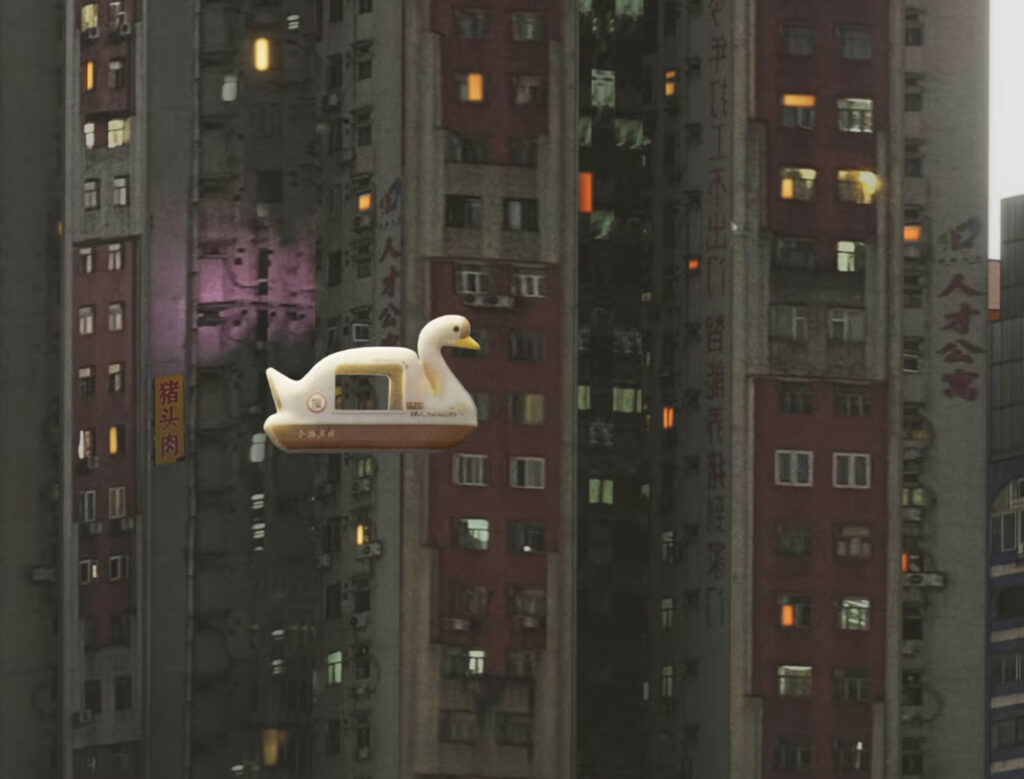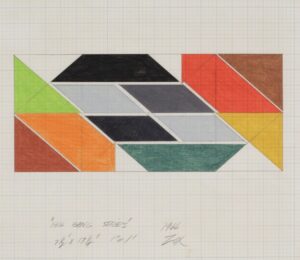In a world where digital immersion increasingly encroaches on the boundaries of physical life, Chinese digital artist Huang Heshan offers something both nostalgic and radical: a city that doesn’t merely exist in pixels, but vibrates with emotional memory. In his latest exhibition, Too Rich City: The Old White Swan Passenger, Huang invites audiences to board a metaphorical vessel traversing not space, but memory—a synthetic voyage that pulses with longing, critique, humor, and architectural fantasy.
Unveiled after three years of development, this new chapter in Huang’s expansive Too Rich City series is less a continuation than a luminous reimagining. It draws from the coded sediments of 8-bit aesthetics, the melancholy of rural exodus, and the absurd optimism of contemporary Chinese urbanism. With uncanny digital finesse, Huang weaves a virtual city that is not only a critique of material affluence, but a meditation on cultural amnesia. In this phantasmagorical realm, the future collapses into the past, and the past is reassembled with the aesthetic of simulation.
Digital Architect of Memory and Absurdity
Huang Heshan, who emerged in the public eye through his playful yet incisive Wild Design series, has become one of China’s most emblematic voices in digital art. His early work, which featured fictitious property ads and digitally rendered hyper-urban spaces that mimicked real estate euphoria, became viral precisely because they struck a nerve. His renderings weren’t just surreal—they were eerily familiar. In mimicking the banality and bombast of commercial Chinese architecture, Huang laid bare the contradictions of a society accelerating toward prosperity at the cost of coherence.
With Too Rich City, Huang no longer parodies real estate absurdities. He constructs full-blown speculative metropolises: vibrant, chaotic, and linguistically rich with local dialects, symbols, and mythologies. These cities aren’t utopias—they’re burdened with kitsch, overdesign, and the residue of broken dreams. Yet they are deeply lovable. They resonate because they recall the ways people remake identity and space through improvisation.
The Old White Swan Passenger: A Journey Through Synthetic History
This latest installment, The Old White Swan Passenger, functions less as an exhibit and more as a mythic narrative unfolding in virtual space. Visitors are immersed in a digitized environment structured like a living archive. They move through fragmented architectural models, fictional train stations, and pixelated ports of arrival. At the center is a symbolic passenger—the “Old White Swan”—a recurring motif in Huang’s work that represents dignity, exhaustion, and rebirth.
The swan is not merely a bird, but a cipher for nostalgia amid hypermodern transformation. In this exhibition, the Old White Swan is rendered as a spectral traveler aboard a time-warped vehicle—part junk boat, part interstellar vessel—gliding through a terrain of collapsed spatial logic. Time folds and unfolds as the visitor moves through scenes reminiscent of 1990s cybercafes, luxury ghost towns, and rural landscapes abandoned in the wake of megacity sprawl.
These digital ruins are melancholic yet ironically opulent. Heshan’s pixelated palettes—rich with pinks, oranges, neon greens—imbue the simulation with an exuberance that feels both joyful and tragic. One could say Huang is creating a digitized form of shan shui painting, where the virtual landscape carries a moral and emotional dimension.
Between Baudrillard and Baoshan
To understand Huang’s work is to confront the inherent instability of the real. Drawing parallels with Jean Baudrillard’s theories of simulation, Huang’s cities don’t imitate the real—they replace it. In Too Rich City, imitation becomes an act of intervention, reclaiming spatial narratives from homogenized development. Where Baudrillard warned of the “desert of the real,” Huang populates that desert with arcades, bathhouses, karaoke halls, and absurdly monumental structures—many drawn from provincial fantasies of wealth and status.
And yet, Huang doesn’t mock these forms. His affection for local oddities—like the ubiquitous dragon pillars of Chinese banquet halls or the neon signage of third-tier city clubs—is sincere. His virtual cities brim with references to Baoshan, Luoyang, Wuhu, and other overlooked nodes in China’s urban hierarchy. He offers a cultural cartography that the official gaze ignores.
The humor is political, but it is also deeply humane. By elevating vernacular architecture and forgotten spatial habits into grand digital dioramas, Huang creates a platform for memory that is inclusive and non-linear.
A New Aesthetic: Lo-Fi Sentimentality
Stylistically, The Old White Swan Passenger departs from high-resolution digital art and embraces the texture of lo-fi simulation. Think: glitchy textures, old-school shading, simple polygonal modeling. This isn’t a limitation—it’s a statement. Huang seems to say: “Precision is not the same as emotion.” In fact, the crudeness of these renderings enhances their emotional pull. They mimic the way we remember—not clearly, but in saturated hues, unfinished edges, and disjointed spaces.
In one part of the exhibition, a digital billboard flickers with a looping message: “Welcome back, passenger. This is your city too.” It’s both welcoming and haunting. Huang reminds us that no one fully owns a city, not even its architects. Cities are inhabited by traces—memories, ghosts, myths, and rumors—and the digital realm becomes a stage for their revival.
From Solo Vision to Collective Memory
While the exhibition bears Huang’s singular signature, its ideological frame is collective. The viewer is not a passive observer, but an actor in the city’s unfolding drama. By using interactive walk-throughs, voice-over narration, and AI-generated folklore, Huang destabilizes the notion of authorship. Every visitor becomes a potential re-writer of this urban myth.
In this sense, Too Rich City functions as a shared poem, a kind of mass diary for the digital generation. It reflects how people, across class and geography, imprint emotion onto space—even if that space exists entirely on a screen. Huang’s virtual world doesn’t exist in opposition to the real, but in continuity with how we increasingly experience urban life—via simulacra, via nostalgia, via a flattened but intensified screen of meaning.
The Ethics of Simulated Urbanism
There’s a serious question at the heart of Huang’s artistic inquiry: what happens when cities become uninhabitable, but infinitely viewable? In China, where ghost cities and mega-developments remain unsold and unused, the digital replica becomes strangely more functional than its real counterpart. Huang doesn’t celebrate this—he critiques it, mourns it, and gently mocks it.
Yet he also proposes an alternative: that maybe memory and imagination are the last viable forms of residence. As climate pressures, economic shifts, and urban gentrification continue to erode the meaning of “home,” Huang’s virtual city-building becomes not escapist, but salvage work—a way of keeping the soul of the city alive, even if only digitally.
His simulation is not neutral. It carries emotional weight. It reminds the audience that architecture is never just physical—it’s cultural, emotional, and deeply political. And if the future is virtual, then perhaps it must also be caring.
Where We Go When We Remember
Huang Heshan’s Too Rich City: The Old White Swan Passenger is more than an art exhibition—it is a poetic infrastructure, a speculative map of belonging, and an homage to the dreams that built cities, pixel by pixel. In Huang’s hands, the screen becomes not a barrier, but a vessel—carrying us across the tides of memory, irony, and imagination.
We don’t just visit this city—we recognize it. Its karaoke parlors, unfinished monuments, and spectral trains belong not just to China, but to the global condition of accelerated forgetting. Huang urges us to pause, to wander, to remember—not with clarity, but with affection.
The Old White Swan sails on—not into the future, but into the poetics of reassembled pasts, rendered in code, color, and longing.
No comments yet.








